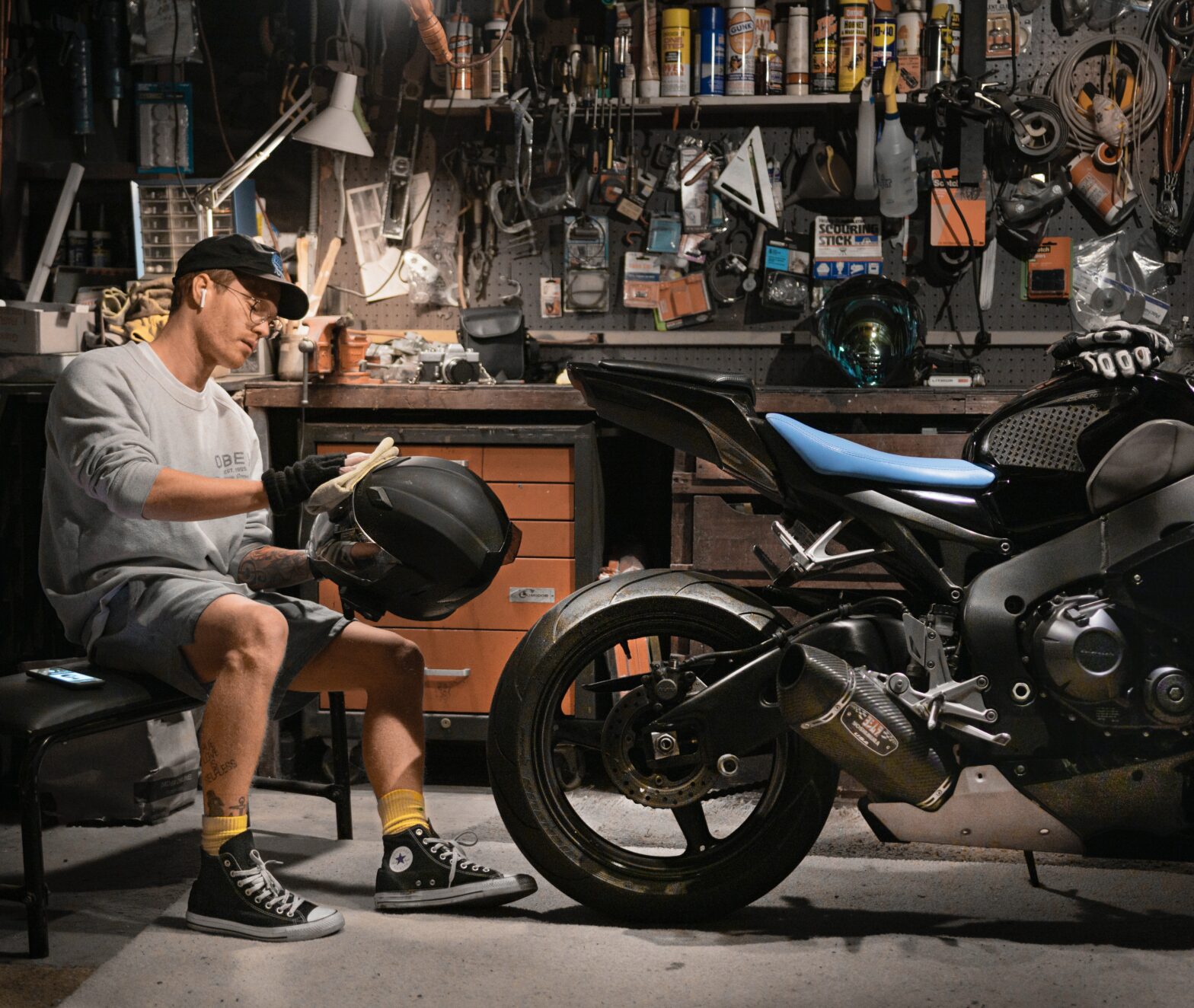Protective equipment for motorcyclist is made to reduce, or completely prevent, injuries sustained in a fall from a motorcycle.
Remember that you are spending money on your own health and safety when you buy motorbike equipment. Avoid purchasing fake protective gear from unlicensed manufacturers. Resist the urge to get inexpensive, low-quality equipment. The first medical procedure or hospital stay will cost far more than buying top-notch motorbike gear. But remember that having any kind of equipment — no matter how subpar — is always better than having none at all.
Another universal note about all moto equipment is that wearing basic gear on a daily basis is preferable to owning very powerful equipment at home but not using it due to inconvenience. Protective equipment only works if you have it on!
Head protection

A motorcycle helmet ought to be the first item on your list of protective equipment for motorcyclists. We are all aware of the facts and how crucial it is to keep your head and brain safe when riding a motorbike. 80% of motorcyclist deaths are due to head injuries. The longest recovery times are associated with head injuries and serious brain trauma. After suffering traumatic brain injuries in motorcycle accidents, some people never fully recover. I’m still shocked when I see riders driving without helmets. BTW a bandana and cap are not head protection!
Nowadays numerous helmet options are available, with differing degrees of protection. Additionally, your helmet needs to protect your eyes. It’s advised to choose a model with a complete or partial face shield. Goggles or other protective eyewear will need to be taken into consideration if you decide to purchase an open-face or half-size motorcycle helmet.
Earplugs stand as indispensable safety gear for riders navigating the roads on motorcycles. The cacophony that surrounds motorcycles, irrespective of whether you’re cruising on a robust V-twin engine or not, emphasizes the importance of these ear protectors. The amalgamation of wind and traffic sounds can swiftly lead to ear fatigue with extended exposure to such clamorous environments.
Body protection
To protect the body a rider should wear jackets (textile, leather, jersey), turtles, or/and back protection.

Leather, Kevlar, Cordura, and other synthetic materials are used to make the majority of motorcycle jackets. Your skin is shielded from unpleasant road rash by these materials. A high-quality jacket should include extra padding and protection for your shoulders, elbows, and back to protect you from impacts. Some jackets and vests with airbags are another product of technological advancements.
Seek a jacket with adjustable vents and a detachable liner for versatility in both hot and cold climates. This type of protective equipment for motorcyclist is available in a variety of styles and fashions to meet your needs and keep you safe while riding.
The most affordable and effective riding apparel for visibility is motorcycle vests with high visibility and reflective materials.

They aid in making sure we are noticeable. Since these vests are used by highway and road crews, many motorcycle riders wear them to increase their visibility, especially when riding in places with lots of traffic and dense populations.
Leg protection
Safety boots, shorts, and knee pads can provide leg protection.

Motorcycle boots are essential for a comfortable and secure riding experience, but they are frequently disregarded. They should be lightweight and waterproof. Also, they ought to offer sufficient rigidity for safeguarding and pliability for ease of use off the bike. To prevent foot discomfort when changing gears on a motorbike, high-quality boots should also feature extra padding on the left boot.
But the most crucial component of motorcycle footwear is the sole. Boots must have enough traction and be resistant to oil and other fluids because road surfaces vary and alter according to the weather. A good boot should also offer enough ankle support because bikes can be heavy, to avoid wearing out the foot when stopping at traffic signals.
Such protective equipment for motorcyclist as protective shorts have special inserts in the hips and lower back. They are necessary, first and foremost, to safeguard the hip and tailbone joints. Furthermore, there is a noticeable decrease in the size of bruises on soft tissues.
Knee pads will protect your joints from impacts and bruises. They are typically composed of impact-absorbing high-tech plastic. The protection will remain in place thanks to the design and positioning of the elastic straps, and the ease of movement — the ability to bend within a 90-degree range. Knee pads should be worn under pants, this is the only way they will fit tightly around your legs and provide the maximum level of protection.
Hand protection
Comfort is the primary need for gloves. The truth is that hands are not injured in accidents as frequently as other body parts are, and losing one or more fingers does not significantly affect one’s ability to function in daily life as a non-functioning knee, for example. The majority of the controls, including the clutch, brake, gas handle, and steering wheel, are simultaneously held in the hands of the rider. This means that to be able to manipulate them precisely, your hands must have good sensitivity, even when wearing gloves.

Motorcycle gloves come with padding to protect your hands and knuckles. Larger gauntlets on some gloves can also offer more cushioning and wrist protection. In addition to shielding your hands in case of an accident, many gloves also improve the functionality of riding. To improve grip on the clutch and brake levers, for instance, many gloves include textured finger surfaces. Additionally, some come with wiper/squeegee material to assist you in removing rain and other debris from your face shield.
Weather protection
To maintain concentration and 100% attention on the road and control of your motorcycle, it’s better to use protection from various weather conditions, such as raincoats, shoe covers, hydration packs, thermal vests, etc.
Conclusion
Wear the protective equipment for motorcyclist and ride carefully to keep yourself safe in any riding condition. It’s critical to be both intelligent and at ease. You’ll stay safe thanks to advancements in preventive and protective motorcycle safety gear. Find out more about motorcycling skills in our social network for motorcyclists CryptoMoto! Let’s discuss in public chats on the CryptoMoto App if you really need protective equipment to ride a motorcycle.











